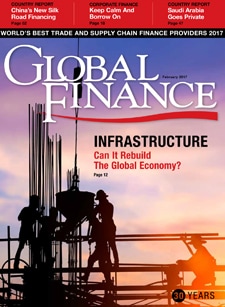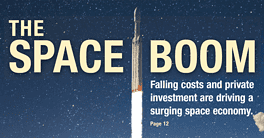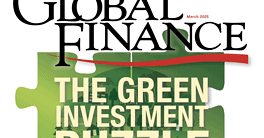FEBRUARY 2017 | Vol. 31 No. 2
EASIER SAID THAN…
Now that Donald Trump is the 45th president of the United States, we will all see how many of his stated goals will be achieved during his presidency. We will also see whether putting “America first” exposes any contradiction between the desire for strong growth and the call to reshore manufacturing and bring investment dollars back home.

Can the US simultaneously adopt an expansionary fiscal policy, lower taxes and strengthen the dollar without any long-term consequences? Can it adopt protectionist policies while so much of its growth and corporate strength come from exports? The wide consensus on fiscal stimulus in the US does not seem, at least right now, matched by a similar enthusiasm (particularly in the US Congress) for tariffs, sanctions or other trade retaliation. Such measures could trigger trade wars on a regional or global level—with unknown consequences.
This uncertain scenario has compelled many analysts and corporate observers to focus on the new US administration’s actions, rather than its stated goals.
Our cover story this month is rare in showing a consensus—in both advanced economies and emerging markets, among protectionist regimes and free market ones—as to the limits of monetary policy in fostering stable growth. Of course, the devil is in the details.
Where would the money needed for all the infrastructure investment come from? From the different governments, with clear effect on their public debt? Or from private investors, sparking strong competition between countries and projects? It seems clear that the global demand for investment in infrastructure is much higher than the funds available, and this too will delay many projects and limit others—with as yet unknown consequences.

Andrea Fiano | Editor
afiano@gfmag.com

